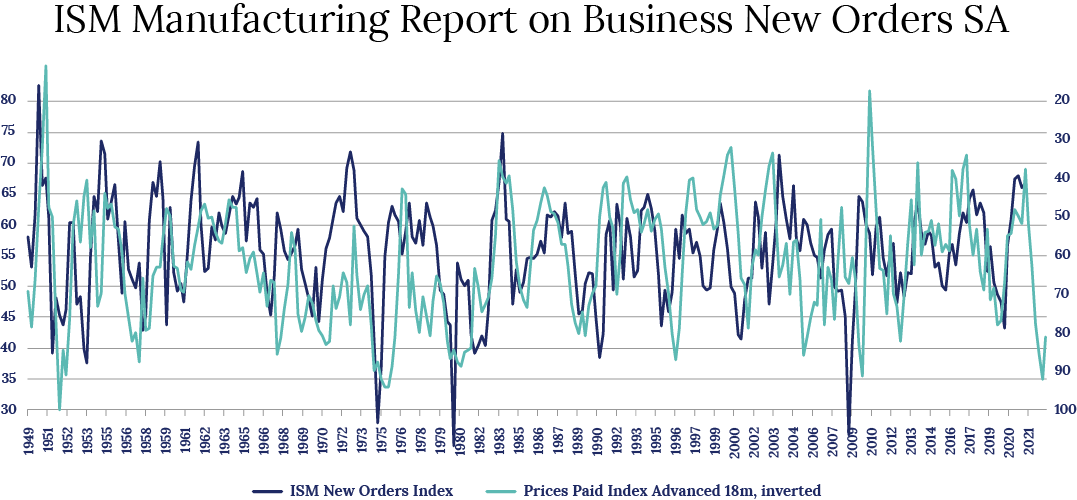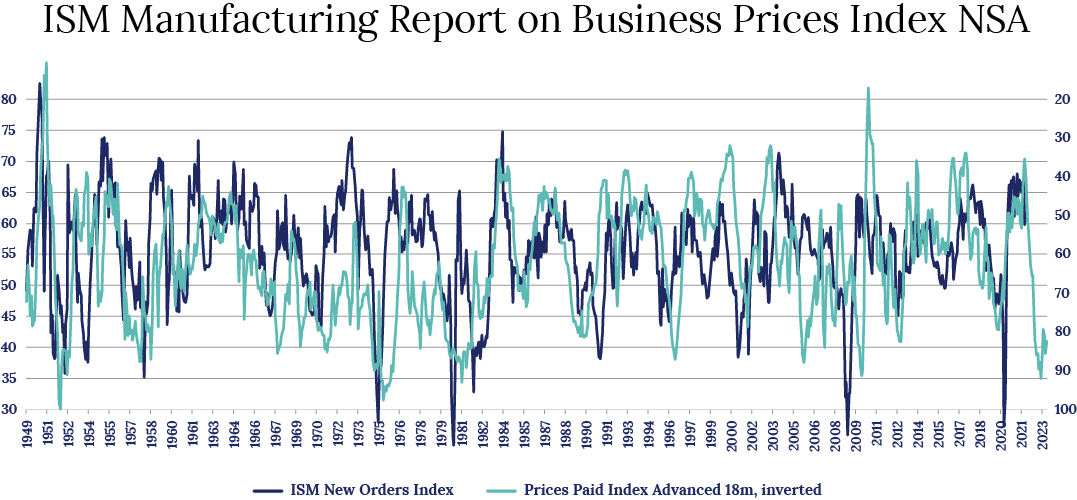2022 – Time to take action (an alternative approach)
2022 looks like it could be a challenging year for equity investors. The after-effects of the pandemic driven monetary support which overwhelmed financial markets in 2020 are concerning.
The global economy is likely to slow as stimulus fades, quantitative easing (QE) is withdrawn, and interest rates rise more broadly. Compounded by base effects, this makes it almost certain that the earnings growth that drove equities higher in 2021 will be diminished materially as this year progresses.
As the charts below illustrate, PMIs have been powerful guides when it comes to predicting the path of earnings; and whilst it is true that they have not yet rolled over, they appear to be peaking at a high level.


Source: Institute of Supply Management
The US consumer, which is 70% of US GDP, is unlikely to come to the rescue. Despite high employment, consumer confidence is at a ten-year low and ever declining affordability is weighing on housing sentiment and sales. Although average hourly earnings growth is strong in nominal terms, taking into account inflation, it is basically flat. Given this, wage increases are likely to remain high, pressuring corporate margins that are at record levels.
China is also unlikely to fill the gap. With a more inward-looking leadership, challenges from COVID, and an energy crisis to solve, the country is grappling with serious problems. Add to this an over-reliance on property at some 30% of GDP, demonstrated by the well-documented travails of developer Evergrande and the fact that China’s economy is no longer as significant as it was for the rest of the world, with its falling share of global GDP growth.
Inflation threats
Even if there is still a healthy debate about inflation’s path over the next two years, Fed Chairman Powell first signalled a shift in the balance of probabilities when he announced an acceleration of the QE taper at the end of November last year.
If in 2022 inflation turns out to be a bigger problem than the optimists expect and this causes weakness in equities, then investors should not kid themselves that the so-called “Fed Put” exists to underwrite stock markets.
The rapid and extreme deployment of monetary support in early 2020 was motivated by a staggering shortage of liquidity across financial markets and especially in Treasuries. This is not to say that the Fed is indifferent to trends in equities as a component of financial conditions, but these trends are only part of an array of inputs it takes into consideration.
Concentration and valuation risk
As we have said repeatedly over the last year, the question for equity investors is not whether there will be persistent inflation but how they are positioned if there is. Given the inflation data, this question is increasingly urgent.
Our view remains that most investors are set for the status quo: a low growth, low inflation, and low interest rate world. Through heavy exposure to US and to Tech equities, their savings lack diversification.
The evidence for this is profuse but consider no more than the following: US equities are now just under 70% of the MSCI world index, and, staggeringly, ten US equities (eight of them Tech) represent just under 20% of that index: Apple, Microsoft, Amazon.com, Tesla, Alphabet A, Alphabet C, Meta A, JP Morgan, and United Health.
Given this sort of concentration risk, many savers are vulnerable to the tighter monetary conditions that would accompany persistent inflation. Rising interest rates would undermine expensive areas of the global equity market like the aforementioned US and Tech; however prices can fall fast and big market capitalisation losses can be large in a rush for the exits.
Speculative and insider flows
Particularly since the pandemic low of March 2020, there has been huge speculative activity in US equities. This helps to explain the massive retail short-dated call option buying, focus on volatile meme stocks and billions flowing into leveraged ETF assets.
Froth like this is a concern especially as it contrasts with the much less high-profile activity of insiders. Insiders are those supposedly in the know where companies are concerned and what they know seems to be leading them to sell.
The time is now
As the economy slows and the PMI starts to fall from its peak the old market saying comes to the fore: when there is growth for all, buy cheap shares; when growth is scarce, buy growth shares.
However, the usual playbook may well not apply. As stated, growth shares are already widely held and buying more of what investors already have up to the gills makes little sense.
What does make sense is an alternative approach to global equity investing. One that includes income as a greater component of total return to mitigate against rising inflation. One that is diversified by geography and sector with underweights in the US and particularly Tech. And one that can not only withstand periods of market weakness, but take advantage of them.
2022 is already proving to be a challenging year for equity investors, but are you prepared for more to come?
We believe this alternative approach is the way we can best serve our investors as we start another year, and for those who are yet to do so, now is the time to take action.
Never miss an insight
Enjoy this wire? Hit the ‘like’ button to let us know. Stay up to date with my content by hitting the ‘follow’ button below and you’ll be notified every time I post a wire.
Not already a Livewire member? Sign up today to get free access to investment ideas and strategies from Australia’s leading investors.
5 topics

